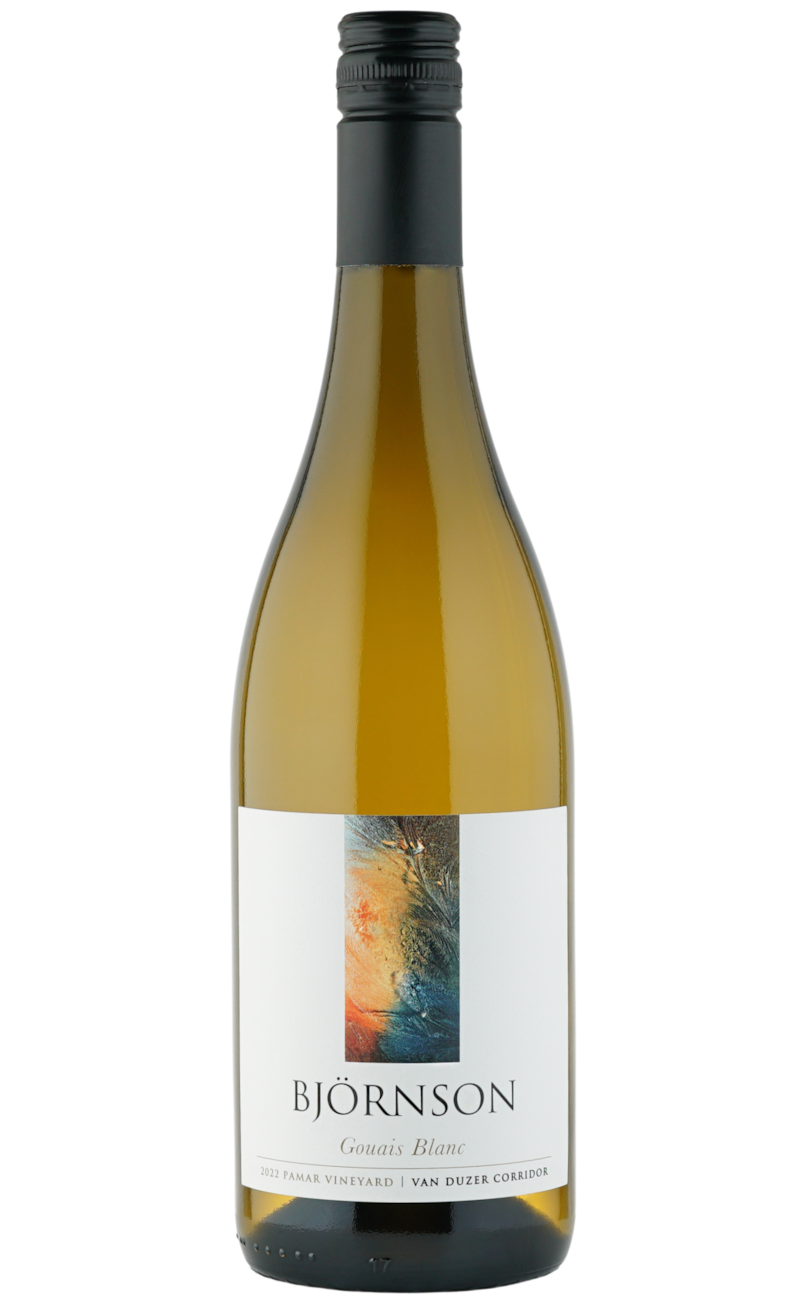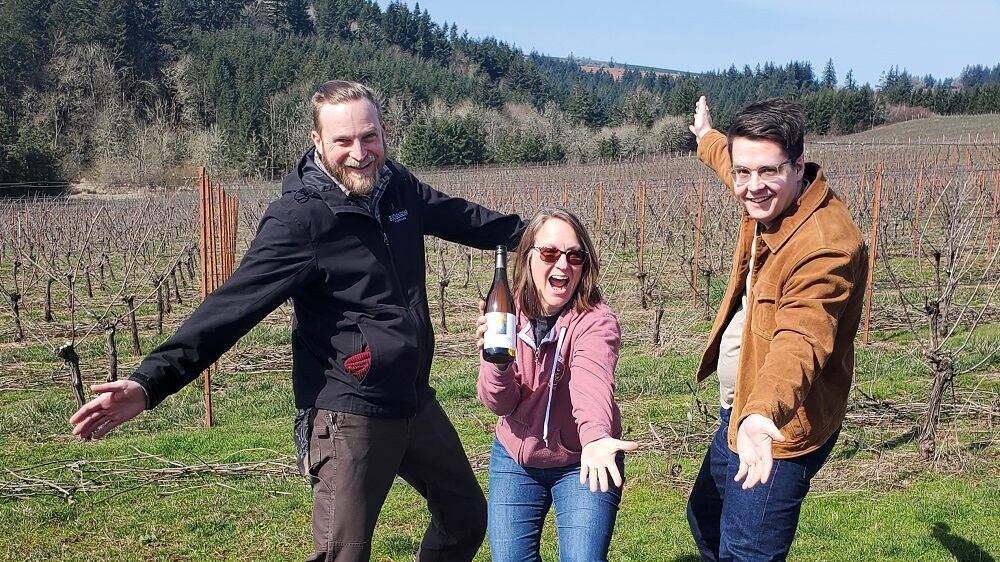Even if you’re familiar with wine varietals like aglianico and zinfandel, you may have never heard of gouais blanc. Though it’s the parent grape of more than 80 well-known types, including gamay, riesling and chardonnay, only around 20 acres grow gouais blanc worldwide.
And none of those vineyards was located in the U.S.—until now. Mark and Pattie Björnson of Salem’s Björnson Vineyard planted the nation’s first commercially grown gouais blanc nearly four years ago in the winery’s Pamar Vineyard, located in the Van Duzer Corridor. This is the first year the public gets to taste the fruits of their labor, but bringing gouais blanc to the market was no easy task.
“Years ago, when they started sequencing the DNA of grapevines, I first heard of gouais blanc as one of the parents of chardonnay, the other being pinot,” says Mark Björnson. “We were curious to taste gouais blanc but found that it was unavailable in the U.S. and difficult to get even in Europe. Foundation Plant Services at UC Davis had some vines, so we got the cuttings from them, had them grafted and planted almost a half an acre.”

Gouais blanc was grown in medieval France to make a simple white table wine. At the time, the chief selling point of the grape was that it grew abundantly and made a consistent, if rather uncomplex, expression of wine. While chardonnay and pinot noir were considered the wine of the aristocracy, gouais blanc was the wine of the common people.
“It is easy to see why the peasants liked it. It grows vigorously and produces lots of big clusters,” Björnson says.
Gouais blanc’s ubiquity also led to its falling out of favor. The nobility felt that if everyone was growing the “low” wine of peasants, it couldn’t possibly be good. In 1732, gouais was even banned by a French parliament.
Back in Oregon, the Björnsons now have their first 60 cases of a 2022 vintage for sale at their tasting room and online. It’s reminiscent of a young white wine you’d find in Austria or Switzerland—and it’s quite young, bottled only in March of this year. The wine itself is better than the pedestrian reputation of the grape from centuries ago, with high acid; notes of green apples, lemon and pear; and a wet stone minerality, making it a good pairing with oysters or ripe cheese. Cheers to the Björnsons for bringing gouais blanc back from the brink and to the slopes of Oregon wine country.
See the rest of Willamette Week’s Best of Portland 2023 here!
